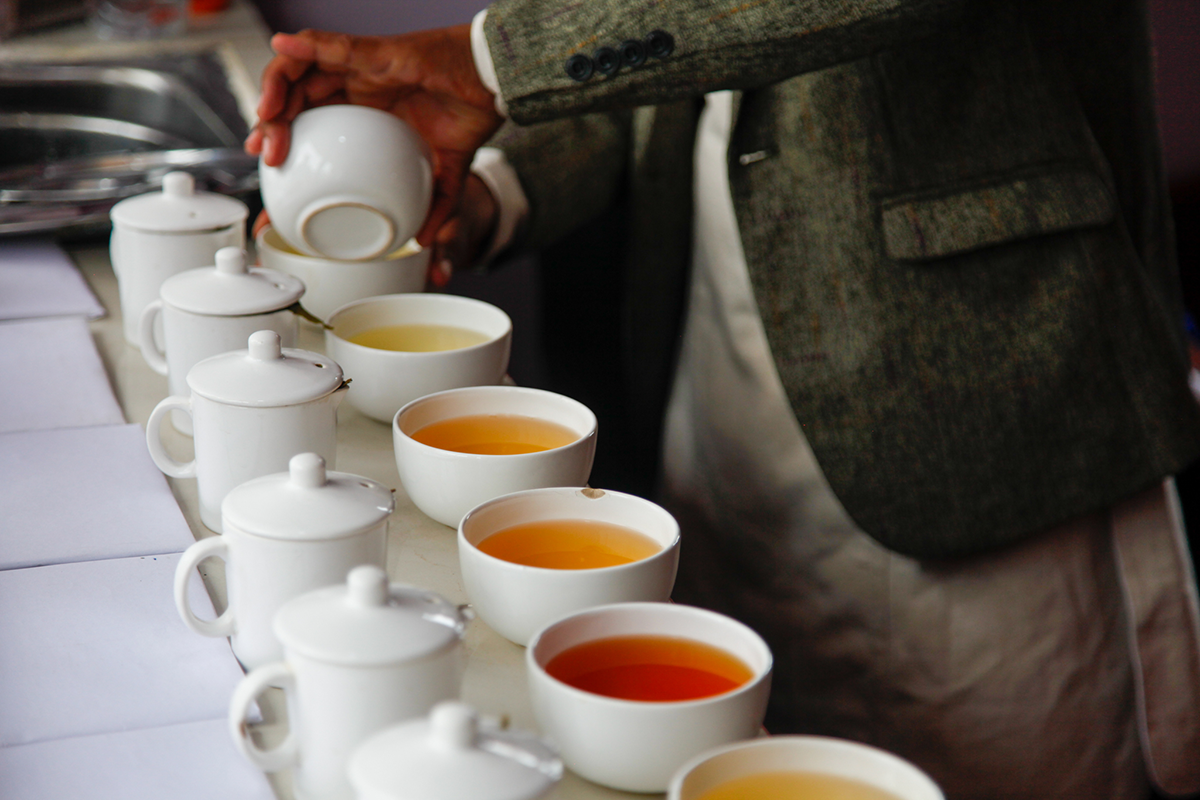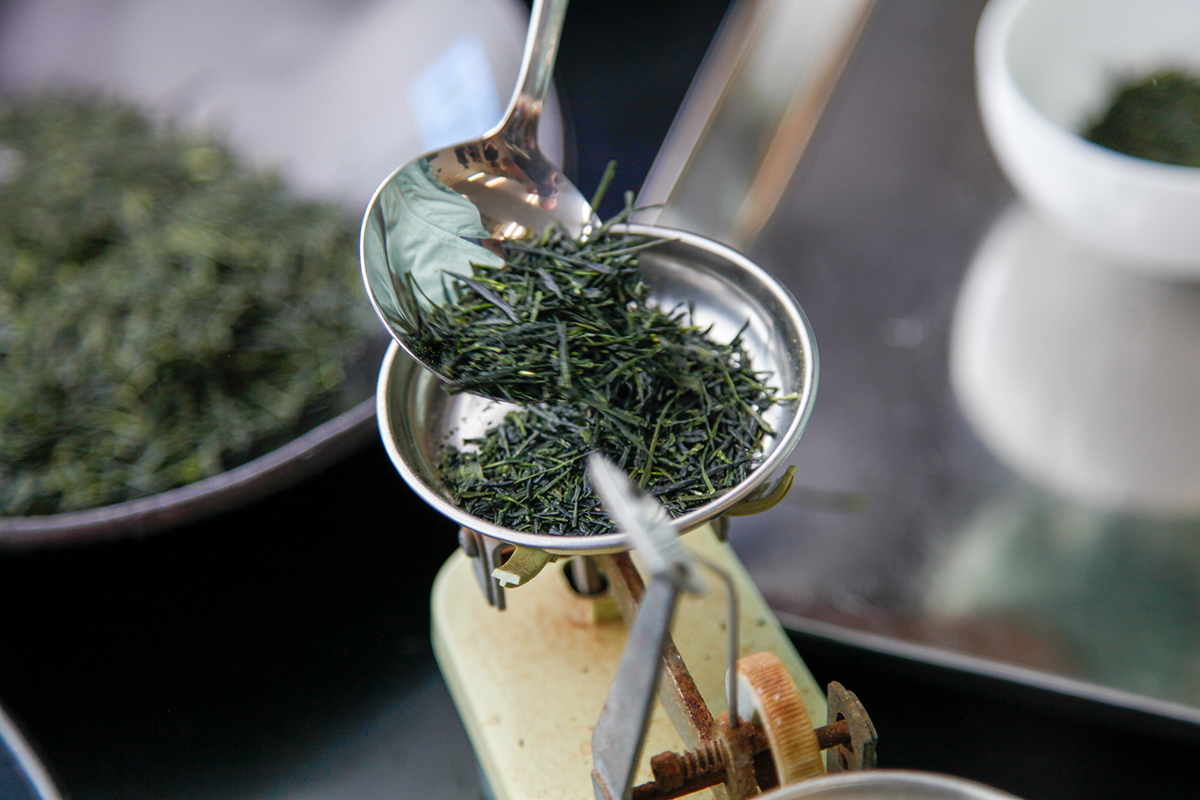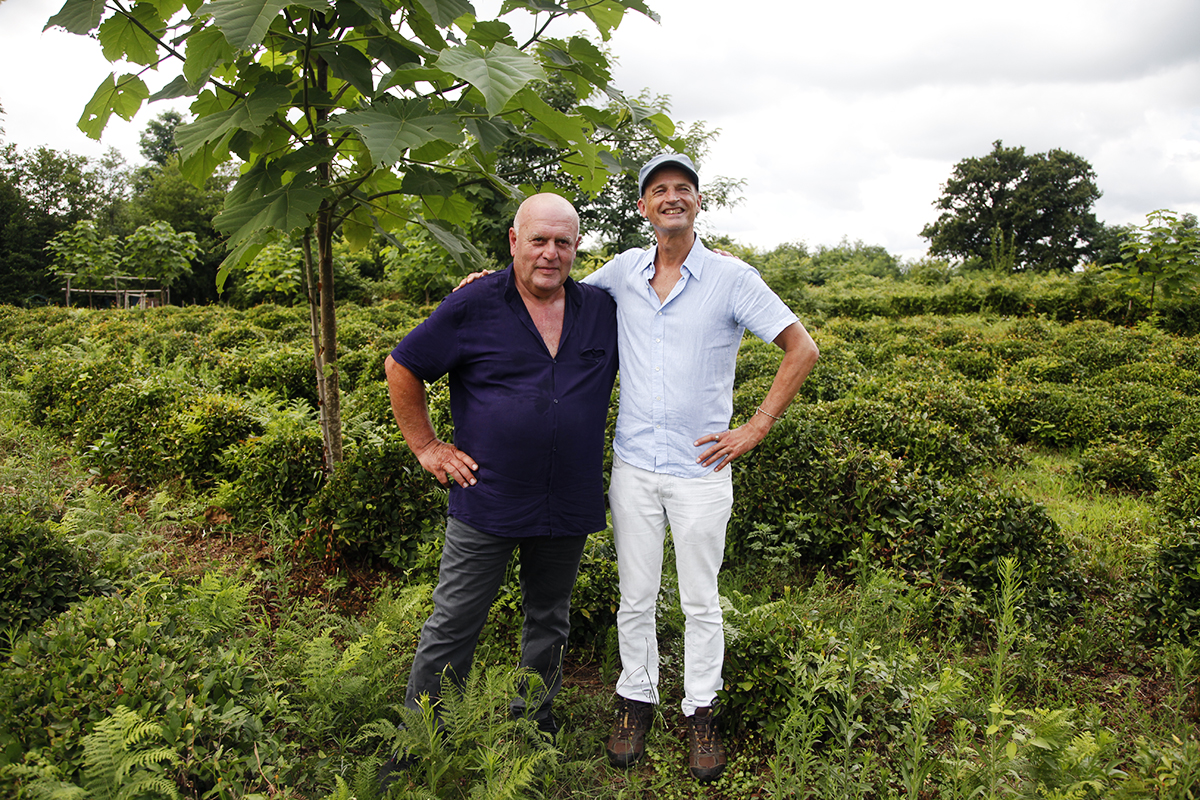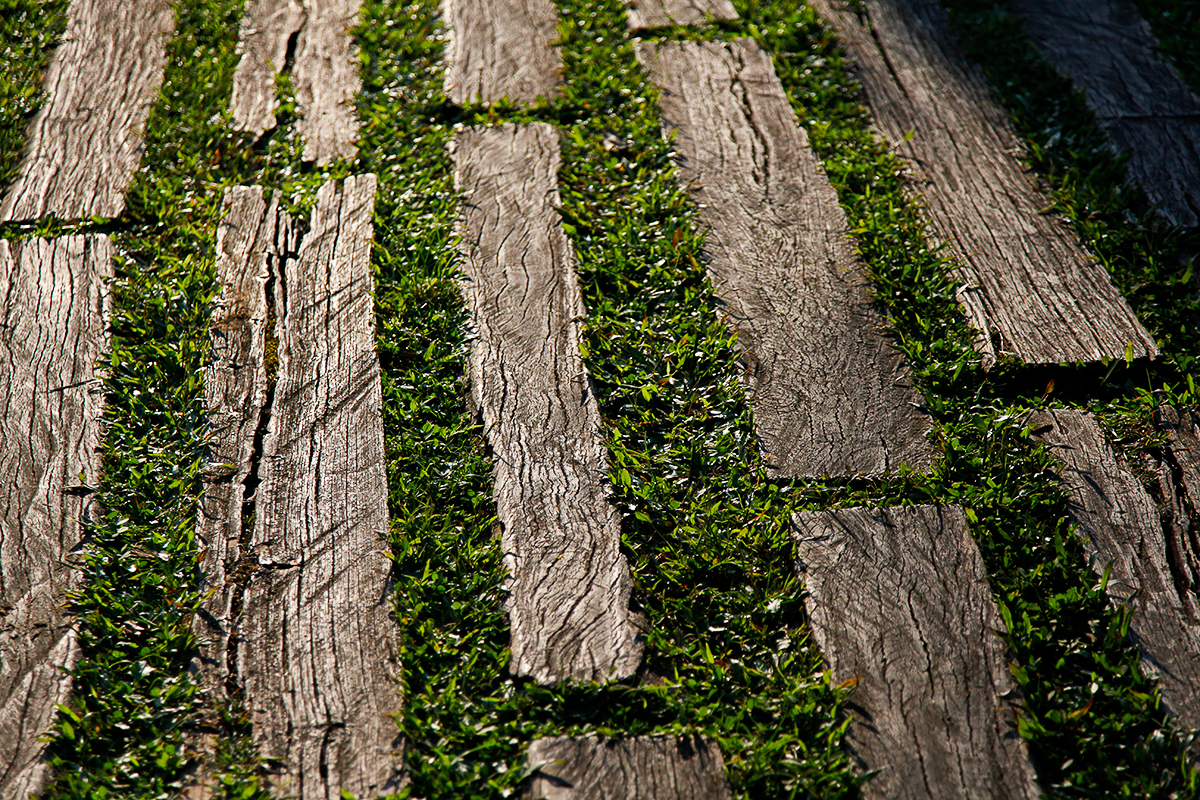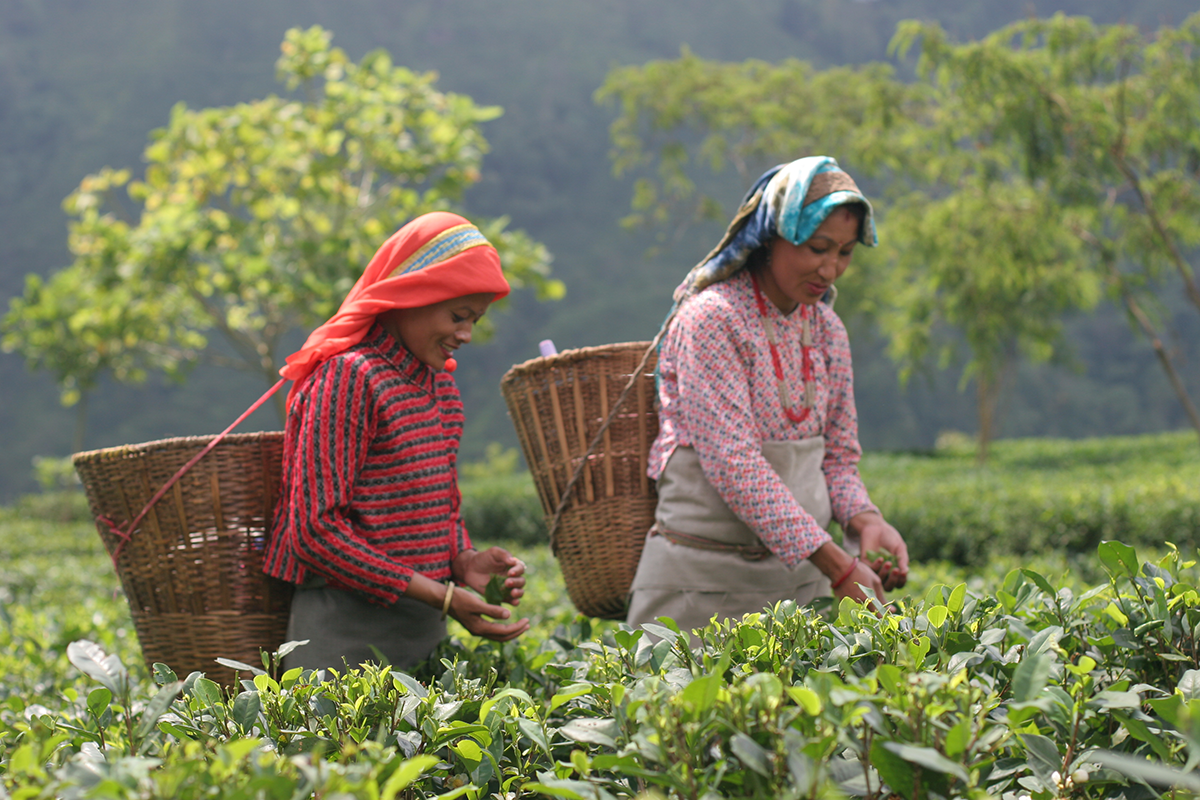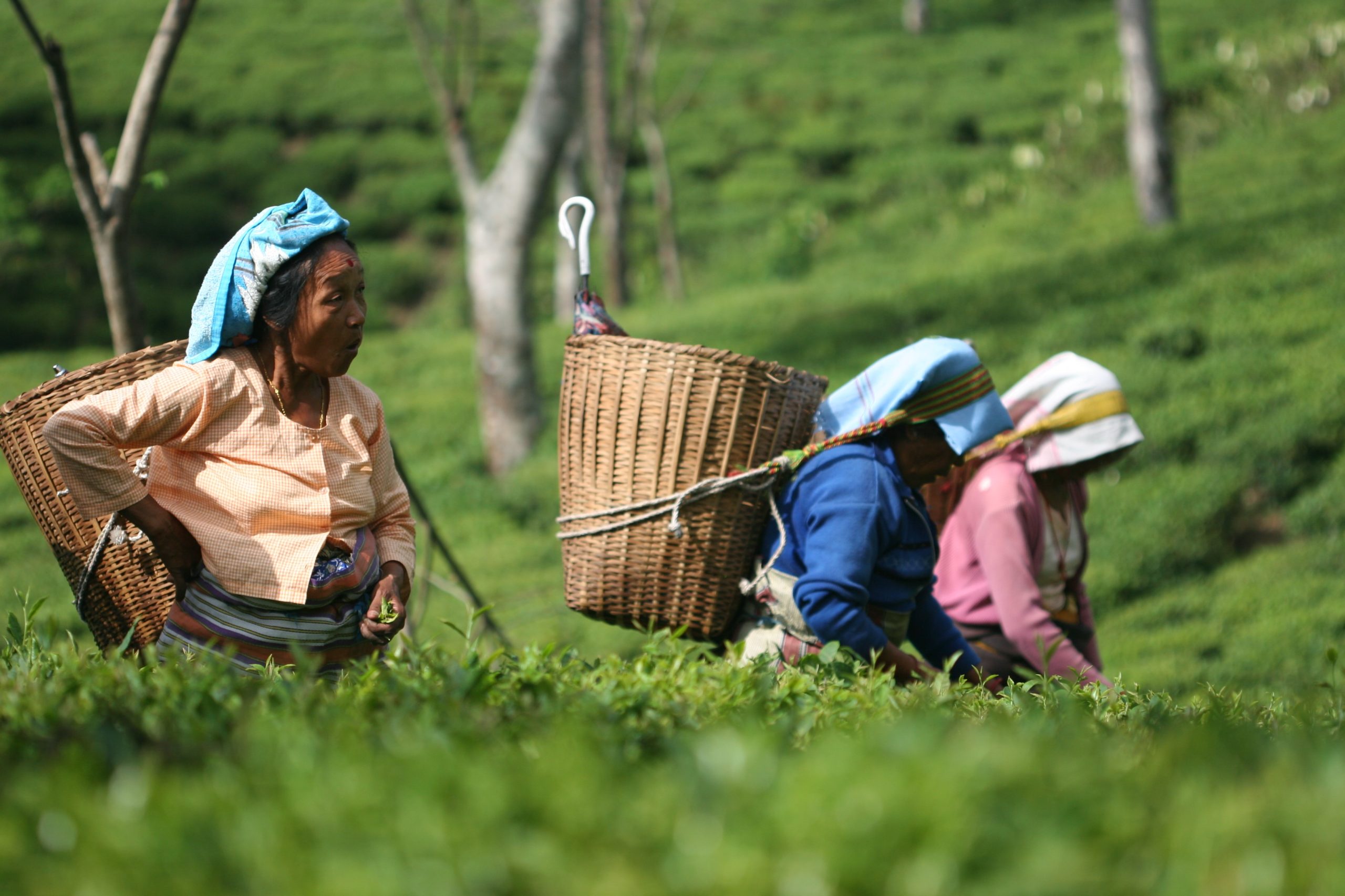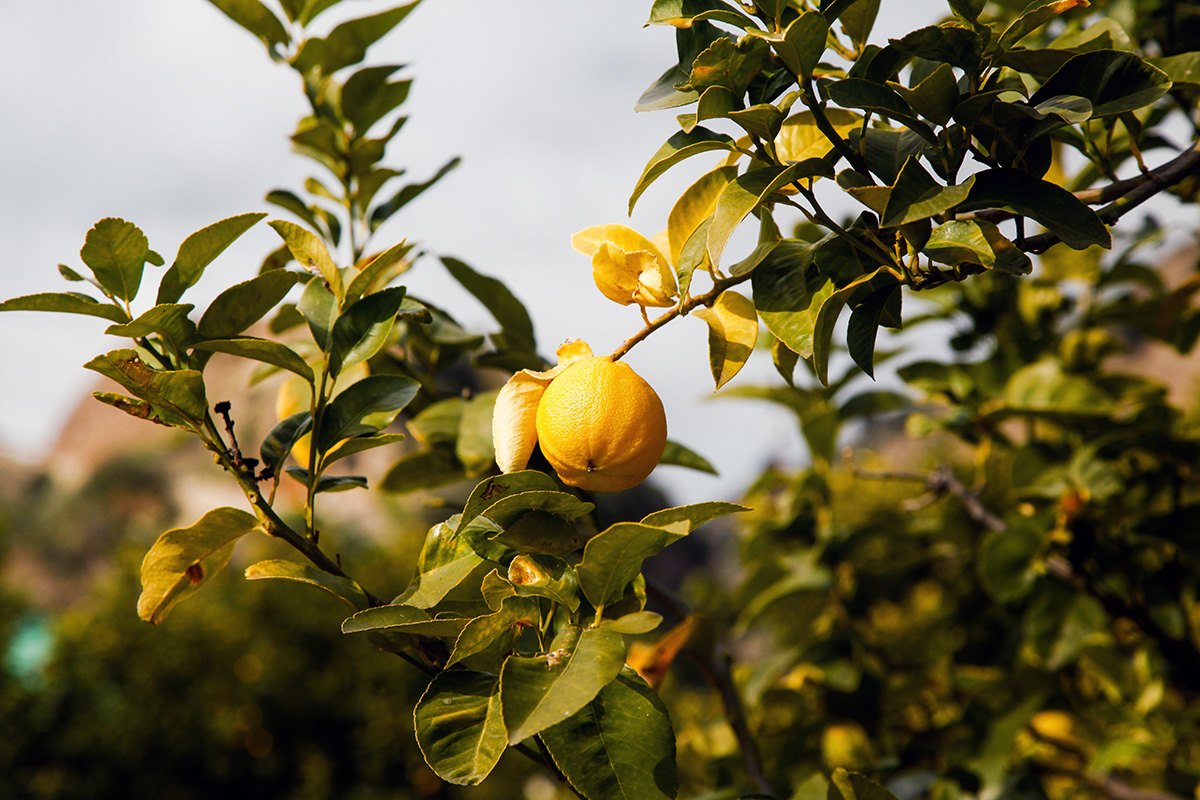Every year, we tea sommeliers are subjected to a marathon: the Darjeeling spring harvests. Samples of new-season teas from the region arrive in bags of ten, twenty or thirty. You must taste them within half a day if you want to be in with a chance of getting hold of the tea. The sooner you buy, the more expensive it is, but the longer you wait, the more you run the risk of missing out on the teas you want. This process, which only takes place for Darjeeling because sales go to the highest bidder and batches don’t exceed a few dozen kilos, lasts about six weeks. By the end, the entire spring production has been sold and the tea bushes, distressed by three consecutive harvests, take a rest before resuming their growth. An observation at this point: every year, these teas are worth more and more. Yet all the gardens in Darjeeling claim to be losing money due to rising production costs, and the increases don’t appear to benefit the pickers. The Mckinsey audits, which were so maligned on the eve of the election, would be invaluable in shedding light on this mystery.
ARCHIVE FOR 2022
Everyone has their way of preparing tea
When buying tea, it’s important to have information that allows you to prepare it in the best possible way in order to obtain the most flavourful and balanced tea to drink. So the recommended water temperature and brewing times marked on each pack are very useful. However, they aren’t definitive. Someone new to tea won’t prepare it in the same way as a connoisseur. For the first-time tea drinker, it’s a good idea to brew it a little longer, to really bring out the characteristics of that particular tea. And the more you know about a tea, the shorter the brewing time, even if it means using more leaves. So the water temperature and brewing times are not to be followed to the letter; rather, they indicate the maximum water temperature and maximum brewing time. Once you know that, you can do as you please and experiment with the preparation to get the tea just as you like it.
Our Georgian friends
In these difficult times for Georgia, we’ve received this particularly moving message from one of our producer friends: “Every kilo of Georgian tea sold, especially in Europe, contributes to both our dignity and our survival.” Of course, we’re doing what we can for those with whom we work closely, and it’s in this spirit that I’m sharing his message with you. If you’ve never tasted tea from Georgia before, there are some delicious ones. White tea from Guria, for example. The harvest was very small. It’s a white tea produced in the same way as the well-known Bai Mu Dan from China.
Beautiful harmony
Here in Taiwan, the ground outside the oldest black tea factory – now a museum – reminds me of my work. If left unpicked, the tender camellia shoots will gradually turn into stems, into wood. Thus the tea plant is made up of greens and darks, of soft and hard materials, of leaves and branches. This contrast of colours also reminds me of tea’s aromas, which are so often vegetal with green teas and woody with black teas. Everything here speaks of tea, right down to the beautiful harmony of the old boards between which a joyful shoot emerges.
Taking time out for spring
In a turbulent world, it’s good to take time out for tea. As spring approaches, bringing with it the first flowers and fresh green shoots, let’s taste those that have just arrived from the Himalayas. The earliest Camelia sinensis plants are growing again on the foothills of this famous mountain range and the tea season is just beginning in Darjeeling. After a harsh winter and a long dormancy, the tea bushes are awakening. The youngest leaves picked from the end of each stem develop floral, almond and herbaceous aromas in the cup.
I’ve just bought a batch of Rohini Early Spring Ex 4 and of Millikthong Early Spring Ex 2. Once they arrive in France and are sent to the lab for analysis, according to our Safetea™* process, they will be available. These teas will offer a moment’s pause, the scent of spring, and a brief respite from the tumult of the world.
*Palais des Thés is committed to offering its customers only certified organically grown teas or teas that have been analysed in an independent laboratory to ensure they comply with European legislation.
Years of happiness and adventure
My colleagues gave me a wonderful surprise by helping me to celebrate my new decade, and I’d like to thank them from the bottom of my heart. Each of them wrote a note on the tea of their choice so that during my long journeys to the other side of the globe they will always be by my side.
The Palais des Thés story began 35 years ago. I’ve dedicated more than half my life to it and nothing touches me more than the smiles and joy of the people who are part of this beautiful adventure.
In Darjeeling, the first harvests aren’t the best
This year is unlike any other and I have no idea how it will play out in terms of the growing, shipping and availability of premium teas. I’ve just heard from Darjeeling that the very first batch has been harvested. Those of you who’ve been following me for a long time, including fans of first-flush Darjeelings, know that you shouldn’t rush into these things. In this region, the low-altitude plantations are the first to harvest their leaves, as they benefit sooner from milder temperatures. As they warm up, the higher gardens start picking too. The longer the period of dormancy, the slower the sap rises, leading to a greater concentration of essential oils in the leaves. This gives those gardens that harvest later the advantage of quality.
Bergamot, from fragrance to cup
Although bergamot is used in tea to make the famous Earl Grey, its main application is in perfumery and has been since the first eau de colognes appeared in the 18th century. Nowadays, bergamot can be found in many fragrances and the greatest perfumers flock to Calabria to choose with care the one that suits their need. To obtain the essential oil, the fruit is first washed with reverse-osmosis water, then cold-processed using peeling machines and centrifuges.
Citrus notes
In Reggio Calabria in southern Italy, bergamot is harvested from November to February from trees that each produce between 80 and 120 kilos of fruit per year. This citrus fruit, widely used in perfumery, gives the famous Earl Grey tea its citrus notes. Bergamot is grown in all the valleys in the region (pictured here: San Carlo valley), which offer breathtaking views of the Ionian Sea or the Strait of Messina.
Bergamot, a fruit from a grafted tree
Just as some tea drinkers don’t realise that tea belongs to the Camellia family, there are Earl Grey fans who don’t realise that the scent wafting from their cup comes from bergamot. The tree that produces this fruit is thought to originate from a hybrid between bitter orange and citron, and the young plant is often grafted onto bitter orange rootstocks. The most prized bergamot comes from Calabria (Italy).

